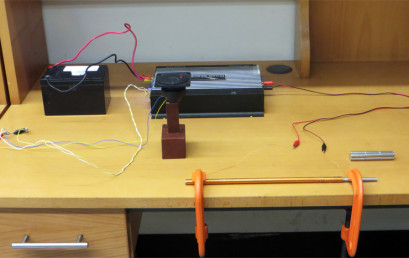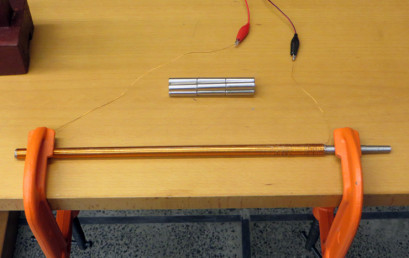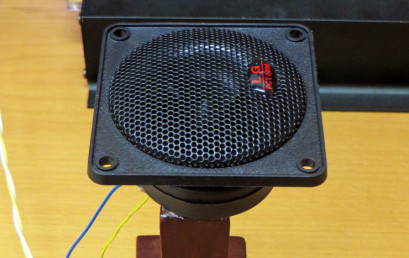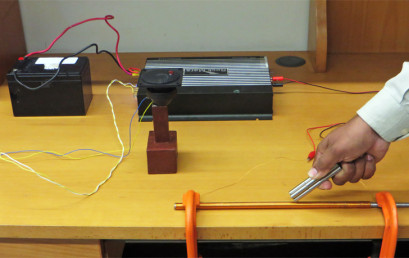Discovered by German physicist Heinrich Barkhausen in 1919, the Barkhausen effect is a name given to the noise which a ferromagnetic material makes when the magnetic force applied to it is changed. To demonstrate this a coil of wire wound on the ferromagnetic material is affected by sudden, discontinuous jumps in magnetization using a hand held magnet. The sudden alterations in the magnetization of the material produces current pulse in the coil. This is amplified to produce a series of clicks in a loudspeaker; this is also called as Barkhausen noise. Similar effects can be observed by applying only mechanical stresses (e.g. bending) to the material placed in the detecting coil.
Barkhausen effect has many important applications today. For example, the amount of Barkhausen noise for a given material is linked with the amount of impurities, crystal dislocations, etc. and can be a good indication of mechanical properties of such a material. Therefore, it is used as a method of non-destructive testing for the degradation of mechanical properties in magnetic materials. It can also indicate physical damage in a thin film structure due to various nano-fabrication processes such as reactive ion etching.
- The apparatus comprising an audio amplifier that feeds into a speaker, a battery used as power source for the amplifier, an iron core solenoid and a magnet.
- The iron core solenoid with 12.5 ohm resistance is clamped with the table and is connected to the amplifier, the magnet will be used to apply the changing magnetic field.
- The speaker produces the amplified sounds of a series of clicks which is also known as Barkhausen noise.
- The magnet is moved along the solenoid to alter the magnetization of the material to produce the current pulse in the coil which is amplified to produce a series of clicks in a loudspeaker.



